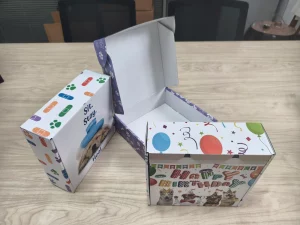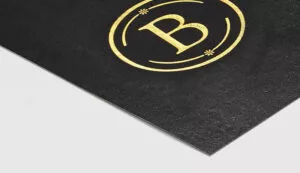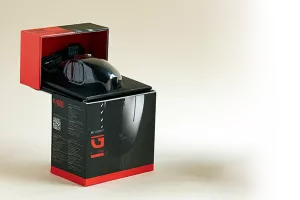Packaging is more than just a way to hold products; it plays a big role in how customers see a brand and how well products sell. This guide will help you understand what makes packaging successful, from the first design ideas to getting products into customers’ hands. You’ll learn about the key parts of good packaging, the latest trends, and how to make smart choices in this important area of business.
Inhaltsübersicht
Wichtigste Erkenntnisse
- Good packaging helps sell products and shows off your brand.
- Using the right materials can make a big difference in how your packaging looks and works.
- Being eco-friendly is important to many customers today.
- Technology is changing how we design and produce packaging.
- Keeping costs down while still making great packaging is key to success.
Understanding the Basics of Successful Packaging Solutions
Defining Packaging Success
Packaging success means creating a package that not only protects the product but also attracts customers. Good packaging should be functional, appealing, and easy to open. It’s about making a great first impression and ensuring the product arrives safely.
Key Elements of Effective Packaging
To achieve effective packaging, consider these key elements:
- Schutz: Keeps the product safe during shipping.
- Aesthetics: Looks good on the shelf.
- Information: Provides clear details about the product.
- Nachhaltigkeit: Uses eco-friendly materials.
Common Challenges in Packaging
Many businesses face challenges in packaging, such as:
- Cost: Finding affordable materials.
- Design: Balancing looks and function.
- Regulations: Meeting legal requirements.
Packaging is not just about wrapping; it’s about creating an experience for the customer.
In summary, understanding the basics of packaging is crucial for success. By focusing on protection, aesthetics, and overcoming challenges, businesses can create packaging that stands out and meets customer needs.
For more insights, check out our essential guide to product packaging where we explore planning, material, prototyping, and much more.

Designing Packaging for Maximum Impact
Incorporating Brand Identity
Creating packaging that reflects your Markenidentität is crucial. It helps customers recognize your product and builds loyalty. Here are some ways to incorporate your brand into your packaging:
- Use your brand colors and logo.
- Choose fonts that match your brand style.
- Include a tagline that represents your brand message.
Choosing the Right Materials
Selecting the right materials for your packaging can make a big difference. Consider these factors:
- Dauerhaftigkeit: Ensure the materials protect the product.
- Cost: Balance quality with your budget.
- Nachhaltigkeit: Opt for eco-friendly options when possible.
| Material Type | Dauerhaftigkeit | Cost | Eco-Friendly |
|---|---|---|---|
| Cardboard | Hoch | Niedrig | Yes |
| Kunststoff | Medium | Medium | No |
| Glass | Very High | Hoch | Yes |
Balancing Aesthetics and Functionality
Your packaging should not only look good but also serve its purpose. Here are some tips:
- Make sure it’s easy to open.
- Ensure it protects the product during shipping.
- Design it to be visually appealing on shelves.
Good packaging is not just about looks; it’s about making a great first impression while keeping the product safe.
By focusing on these elements, you can create packaging that stands out and effectively communicates your brand’s message. Remember, the right packaging can elevate your product and attract more customers!
Sustainability in Packaging Solutions
Eco-Friendly Materials and Practices
Verwendung von umweltfreundliche Materialien is essential for reducing the environmental impact of packaging. Here are some common materials that are considered sustainable:
- Recycled paper: Made from used paper products, reducing waste.
- Biodegradable plastics: Break down naturally, minimizing pollution.
- Plant-based materials: Such as corn starch, which are renewable and compostable.

Reducing Waste and Carbon Footprint
To make packaging more sustainable, companies can take several steps:
- Minimize packaging size: Use only what is necessary to protect the product.
- Implement recycling programs: Encourage customers to return packaging for reuse.
- Optimize transportation: Use efficient shipping methods to lower carbon emissions.
Consumer Perception of Sustainable Packaging
Many consumers prefer products with sustainable packaging. A recent survey showed that:
| Consumer Preference | Percentage |
|---|---|
| Prefer eco-friendly packaging | 70% |
| Will pay more for sustainable options | 60% |
| Believe companies should use sustainable practices | 80% |
Sustainable packaging solutions not only help the environment but also enhance product appeal and support eco-friendly initiatives. By focusing on sustainability, businesses can attract more customers and build a positive brand image.
The Role of Technology in Modern Packaging
Innovations in Packaging Design
Technology has brought many exciting changes to packaging design. New tools and software help designers create better packages that are not only attractive but also functional. Some of the latest innovations include:
- 3D printing for custom designs
- Virtual reality for testing packaging concepts
- Advanced graphics technology for eye-catching visuals
Smart Packaging Solutions
Smart packaging is a game-changer in the industry. It uses technology to improve the way products are packaged and delivered. For example, smart packaging technology can help track products during shipping, ensuring they arrive safely. Some features of smart packaging include:
- RFID tags for tracking
- Sensors that monitor freshness
- QR codes for customer engagement
Automation in Packaging Processes
Automation is making packaging faster and more efficient. Machines can now handle tasks that used to require a lot of manual work. This leads to:
- Reduced labor costs
- Increased production speed
- Fewer mistakes in packaging
Technology is transforming packaging, making it smarter, faster, and more efficient.
In conclusion, technology plays a vital role in modern packaging. From design to delivery, it helps businesses create better products and improve customer satisfaction.
| Technology Type | Vorteile |
|---|---|
| 3D Printing | Custom designs, quick prototypes |
| Intelligente Verpackung | Tracking, freshness monitoring |
| Automation | Speed, accuracy, cost savings |

Navigating the Packaging Supply Chain
In the world of packaging, understanding the supply chain is crucial for success. Navigating supply chain issues can make a big difference in how well your packaging performs. Here are some key areas to focus on:
Supplier Selection and Management
- Choose reliable suppliers who can deliver quality materials on time.
- Build strong relationships with your suppliers to ensure smooth communication.
- Regularly evaluate supplier performance to maintain high standards.
Logistics and Distribution Strategies
- Plan your distribution routes carefully to save time and costs.
- Use technology to track shipments and manage inventory.
- Consider local suppliers to reduce transportation costs and time.
Quality Control and Compliance
- Implement strict quality control measures to ensure packaging meets standards.
- Stay updated on regulations to avoid legal issues.
- Train your team on compliance practices to maintain quality.
Managing the supply chain effectively can lead to better sustainable packaging solutions, which are increasingly important in today’s market.
By focusing on these areas, businesses can create a more efficient and effective packaging supply chain that meets both their needs and those of their customers.
Cost-Effective Strategies for Packaging
Budgeting for Packaging Projects
When planning your packaging, it’s important to set a clear budget. Here are some steps to help you manage your costs:
- Identify your needs: Understand what you need for your product.
- Research options: Look for different materials and designs.
- Get quotes: Ask suppliers for prices to compare.
Cost-Benefit Analysis of Packaging Options
To make smart choices, consider the benefits of each packaging option against its costs. Here’s a simple table to help you visualize:
| Packaging Option | Cost per Unit | Vorteile |
|---|---|---|
| Option A | $0.50 | Dauerhaft |
| Option B | $0.30 | Eco-friendly |
| Option C | $0.40 | Leichtgewicht |
Choosing the right material can significantly lower your expenses. For example, reducing the average shipment size can cut down on warehousing fees and shipping costs.
Maximizing ROI in Packaging Investments
To ensure you get the most out of your packaging investments, consider these tips:
- Evaluate performance: Regularly check how your packaging is doing.
- Seek feedback: Ask customers what they think about your packaging.
- Adjust as needed: Be ready to change your approach based on feedback.
Effective packaging is not just about looks; it’s also about saving money and improving efficiency. By focusing on cost-effective strategies, you can enhance your overall packaging process and boost your profits.
Future Trends in Packaging Solutions
Emerging Materials and Technologies
The packaging industry is seeing exciting changes with new materials and technologies. Innovative materials are being developed to improve sustainability and performance. Some examples include:
- Biodegradable plastics
- Recyclable materials
- Smart packaging that can monitor freshness
Personalization and Customization
More brands are focusing on making their packaging unique to attract customers. This trend includes:
- Custom designs that reflect brand identity
- Personalized messages for customers
- Limited edition packaging for special events
The Impact of E-commerce on Packaging
As online shopping grows, packaging must adapt. This means:
- Creating packaging that protects products during shipping
- Designing smaller packages to save space and reduce waste
- Ensuring packaging is easy to open for customers
The future of packaging is all about sustainability and meeting customer needs. Companies that embrace these trends will likely succeed in a competitive market.
Wrapping It Up: Your Path to Great Packaging
In conclusion, creating effective packaging is a journey that starts with a good design and ends with a successful delivery. By understanding your product, knowing your audience, and choosing the right materials, you can make packaging that not only protects but also attracts customers. Remember, good packaging tells a story about your brand and can make a big difference in how people see your product. So, take your time, plan carefully, and don’t be afraid to get creative. With the right approach, your packaging can stand out and help your business grow.
Häufig gestellte Fragen
What makes packaging successful?
Successful packaging is all about how well it protects the product, attracts customers, and shows the brand’s identity. It should be easy to open and use, too.
How can I choose the best materials for my packaging?
When picking materials, think about the product’s needs, the environment, and the cost. You want something that keeps the product safe and looks good.
What are some common problems in packaging?
Some usual issues include using the wrong materials, high costs, and not meeting customer expectations. It’s important to plan carefully to avoid these problems.
Why is sustainability important in packaging?
Sustainability is key because it helps protect the environment. Using eco-friendly materials and reducing waste can make a big difference.
How does technology improve packaging?
Technology brings new ideas and tools to packaging. Smart packaging can track products, and automation can make the process faster and cheaper.
What should I consider when planning my packaging budget?
When budgeting for packaging, think about all costs involved, like materials, design, and shipping. It’s also good to look at how to get the best value for your money.








